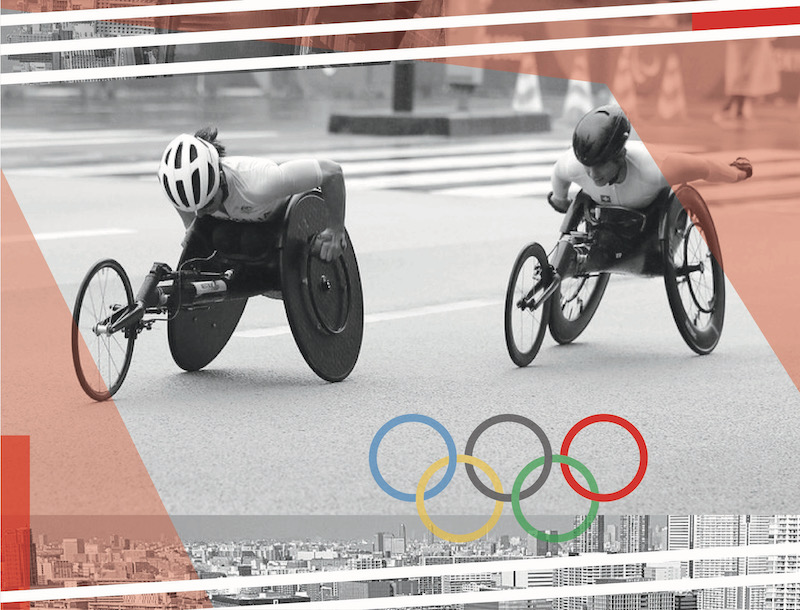
Dr Anthony Cavaiani
Anthony Cavaiani is an Assistant Professor of Communication in the School of Social Sciences at William Woods University in Fulton, MO. His research examines how sports rhetoric utilizes space/place to foster community, to amplify activist messages, and to allow for public deliberation about social and political issues.

Section 5: Politics of Sport
- Despite “Gender Equal Olympics,” focus still on what women are wearing
- At Tokyo Games, athlete activism takes front row seat despite IOC’s attempts to silence athletes
- Forced hijab and female athletes in postrevolutionary Iran
- Pay equity and the Tokyo 2020 Olympics
- We want reform
- The revolt of the Black athlete continues
- The colonization of the athletic body
- Anti-Olympics activism
- Rooting for U.S. Olympians: Patriotism or polarization?
- The new kids on the block: Action sports at the Tokyo Olympic Games
- Black women and Tokyo 2020 games: a continued legacy of racial insensitivity and exclusion
- “A ceremony for television”: the Tokyo 2020 media ritual
- Softball’s field of Olympic dreams
- Equal remuneration for a Paralympian
- Is there space on the podium for us all?
- The Tokyo Paralympics as a platform for change? Falling well short of sport and media ‘opportunities for all’
- Tokyo 2020 Paralympics: inspirations and legacies
- What social media outrage about Sha’Carri Richardson’s suspension could mean for the future of anti-doping policies
- Now you see them, now you don’t: Absent nations at Tokyo Paralympic Games
- Will #WeThe85 finally include #WeThe15 as a legacy of Tokyo 2020?
- WeThe15 shines a spotlight on disability activism
- Activism starts with representation: IPC Section 2.2 and the Paralympics as a platform for social justice
- In search of voice: behind the remarkable lack of protest at the Tokyo Paralympics
The Opening Ceremony of the Tokyo Olympics occurred at 6:00 am where I live. I was up for some of it with my infant son and watched the spectacle that gives the Olympics that special feeling. However, this year, that emotion didn’t just feel different, it was different. During the ceremony, outside Olympic Stadium in Tokyo during a planned demonstration, protesters angry at their city, country, and the International Olympic Committee (IOC) for holding the games during a surge in COVID-19 infections throughout Japan marched to chants of “Go to hell IOC”. Their chants were heard inside the empty space of the stadium where COVID prevented fans from attending. It was well-known athletes would likely protest during these games; not many of us knew Tokyo citizens would start protesting before an anthem was actually played.
Space and place have been theorized by scholars within communication, social science, critical geography, and anthropology, among others. Yi-Fu Tuan explains place as a sense of attachment motivated by experience, while space refers to openness and an ability to move freely. We experience place and move through space. Over the past few years, stadiums have been transformed into highly-visible spaces and places of dissent and contested patriotism. Many people understand the symbolic meaning of stadiums; after all, don’t we attend live sports because we experience a sense of attachment to a team, city, country, school, or place? Our experience of sport is being radically altered as a result of athlete activism inside stadiums.
The IOC was prepared for the rise in activism, modifying Rule 50 of their charter (which all participating countries and athletes must abide by) which originally stated “no kind of demonstration or political, religious or racial propaganda is permitted in any Olympic sites, venues or other areas” but athletes could be disciplined for gestures or disruptions during an anthem. Athletes could make statements and express views during press conferences, interviews, through social media, and during team meetings. The IOC’s attempt to protect, or uphold, the venerable nature of sport and competition inside the stadium demonstrates why sports spaces are, for many people, politically-neutral and sacred. In fact, Rule 50 also asserts that it is “a framework to protect the neutrality of sport and the Olympic Games”. If sport is considered by the IOC to be apolitical and uphold virtues of international unity and harmony, then it would follow that any acts of athlete dissent or protest should not be allowed within the esteemed space of the Olympic Stadium. However, understood within the current moment, this ideal is hotly deliberated about, but maybe unattainable and misguided as well.
Athletes exploited a loophole in Rule 50 that created an opportunity for political demonstrations on the field, but before a match officially began. One of the first acts of athlete protest in Tokyo occurred in women’s soccer, between the U.S. and New Zealand, when players from both teams knelt before the opening kickoff. Players from Great Britain and Japan’s women soccer teams also knelt before kickoff. Some athletes even included activist messages within their athletic performance, as did Costa Rica gymnast Luciana Alvarado during her floor exercise, kneeling on one knee with her head raised and right hand clenched in a fist above her head. Additionally, American shot putter Raven Saunders raised her arms over her head while crossing them into an X, which she stated was a gesture that represents the “intersection of where all people who are oppressed meet,” as she stood on the stand after earning a silver medal. These were not the only instances of athlete activism in Tokyo, but received international headlines because of how they deployed space/place to communicate a powerful message. Saunders gesture clearly demonstrates how space can function as an intersectional site of contesting and negotiating various identities.
Space/place gives order to memory and allows rhetoric to be understood by audiences. Perhaps athlete protests in the Olympics are such a sensitive issue because, unlike how the anthem is played before the traditional U.S. game, anthem-playing during the Games is played after a match/game/competition in honor of the winner. The emotions invoked from anthem-playing during medal ceremonies—honor for one’s country, respect for your opponents, international unity, and a communal ethos of competition—allow for a gesture that disrupts those preferred emotions and crafts a message perceived by some to violate Olympic decorum while simultaneously threatening a sense of attachment people have to how they experience a sense of place. For others, that disruption is the essence of the Olympic spirit, and the force of their message is amplified and rendered visible when performed within the sacred place of an Olympic stadium.

